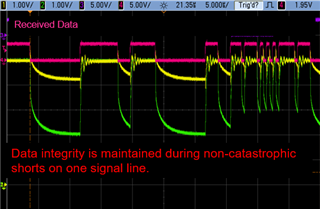Hi Team,
I have one query, if CANH - Shorted to Vbat (Fault 6) occurred, during continuous cyclic message transmission from uC. What was the expected response on CAN TXD and RXD?
Please confirm and share any graphical representations for CAN H, CAN L, CAN TXD, and RXD during the CANH - shorted to Vbat.
Also share what the TXD and RXD responses were when faults 7, 8, and 9 occurred in the same scenario.
Regards,
Jerald



